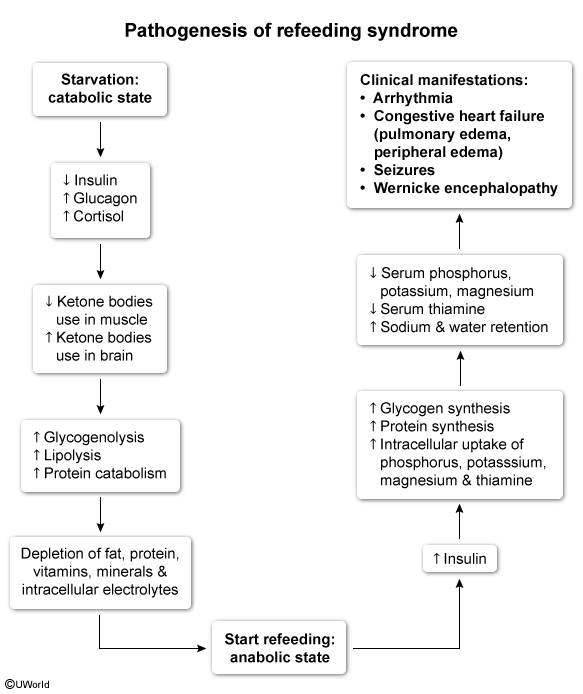Refeeding Syndrome
Article Sections
Introduction
Refeeding syndrome is a potentially life-threatening condition characterized by significant shifts in fluid and electrolyte levels following the reintroduction of nutrition in chronically malnourished individuals (eg, anorexia nervosa). It is most notably associated with severe hypophosphatemia, which can precipitate complications including cardiac arrhythmias, congestive heart failure, seizures, muscle weakness, and respiratory failure.
Pathogenesis
During prolonged starvation, the body conserves energy by decreasing insulin levels and increasing glucagon levels, shifting metabolism toward lipolysis (fat breakdown) and proteolysis (muscle breakdown). This adaptation gradually depletes intracellular stores of essential vitamins (eg, thiamine) and electrolytes (eg, phosphate, potassium, magnesium), even though serum levels may remain normal.
Upon refeeding, particularly with carbohydrate-rich nutrition, insulin secretion surges, driving glucose, phosphate, potassium, and magnesium into cells. This leads to a precipitous decrease in the circulating levels of these essential electrolytes. Insulin also increases phosphate utilization during glycolysis (eg, formation of ATP, 2,3-diphosphoglycerate), further exacerbating phosphate depletion (
Continue Learning with UWorld
Get the full Refeeding Syndrome article plus rich visuals, real-world cases, and in-depth insights from medical experts, all available through the UWorld Medical Library.
Figures
